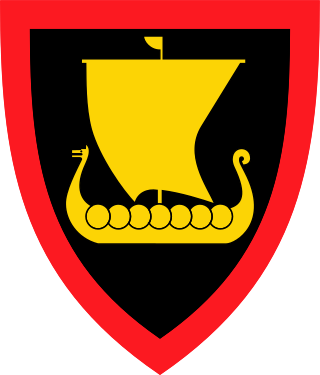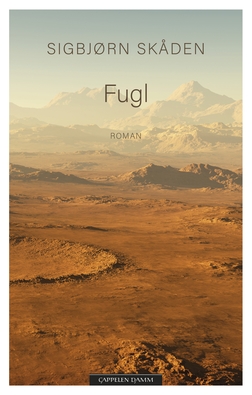
The National Museum is a museum in Oslo, Norway which holds the Norwegian state's public collection of art, architecture, and design objects. The collection totals over 400,000 works, amongst them the first copy of Edvard Munch's The Scream from 1893. The museum is state-owned and managed by the Norwegian Ministry of Culture.

The Home Guard Special Division 016 is a former military unit of Norway, that was a part of the Home Guard. It was established after 1985 to "stop terror- or sabotage actions that could weaken or paralyze Norway's ability to mobilize its military and its ability to resist".

The Telemark Bataljon is a mechanised infantry battalion of the Norwegian Army. It was established in 1993, and is a part of Brigade Nord and stationed at Rena, Hedmark. The battalion consists of five companies/squadrons.
The Norwegian Critics Prize for Literature is awarded by the Norwegian Literature Critics' Association and has been awarded every year since 1950. The prize is presented to a Norwegian author for a literary work as agreed to among the members of the Norwegian Literature Critics' Association. Since 1978 the Norwegian Literature Critics' Association has also awarded a prize for the best work of children's literature. In 2003 the Critics Prize for the year's best work of translation was established, and in 2012 the Critics Prize for the year's best work of nonfiction for adults was established. For other Norwegian Critics Awards, see Norwegian Theatre Critics Award, which has been awarded every year since 1939, the Norwegian Music Critics Award, which has been awarded every year since 1947, and the Norwegian Dance Critics Award, which has been awarded every year since 1977.
Britt Karin Larsen is a Norwegian poet, author and government scholar. Larsen debuted as a poet in 1978 with 5 mg blues og andre dikt, and has published many poetry collections and novels since. She is best known for her novel trilogy about Norwegian and Swedish Travellers, De som ser etter tegn (1997), De usynliges by (1998) and Sangen om løpende hester (1999). The trilogy has been called a literary monument for Romany people in Norway. Larsen was given the Norsk PEN's highest freedom prize, the Ossietzky-prisen, in 2000.

Porsgrunn Station is a railway station serving Porsgrunn, Norway. It serves regional trains on Vestfold Line and local trains on Bratsberg Line, all operated by Vy. The station building is located beside a bus terminal.
Stein Mehren was a Norwegian poet, essayist and playwright. He made his literary debut as poet with Gjennom stillheten en natt (1960). He wrote more than fifty books, mainly poetry.
Georg Fredrik Rieber-Mohn is a Norwegian judge.
David Sandved was a Norwegian architect.
Triztán Vindtorn, born Kjell Erik Larsen, was a Norwegian poet and performance artist from Drammen. He made his literary debut with the poetry collection Sentrifuge in 1970.

.

Jahn Otto Johansen was a Norwegian journalist, newspaper editor, foreign correspondent and non-fiction writer.

Days in the History of Silence is a 2011 novel by the Norwegian writer Merethe Lindstrøm. The narrative focuses on an elderly couple who struggles with the inability to talk about sensitive subjects from their past. The book received the Norwegian Critics Prize for Literature and the Nordic Council Literature Prize.

Through the Night is a 2011 novel by the Norwegian writer Stig Sæterbakken. It tells the story of a father who goes through the mourning process after his 18-year-old son commits suicide. It was Sæterbakken's last book.

Bastian Vasquez, also known as Abu Safiyyah, was a Chilean-Norwegian jihadist who made prominent appearances in propaganda videos for the Islamic State of Iraq and the Levant (ISIL). He is presumed to have died in January or in April/May 2015, in a non-combat infighting incident; another source, Verdens Gang, says that he "lost his life in March 2015, while working with the production of bombs for IS".

Rockheim is Norway's national museum for popular music from the 1950s to the present. It is a division of Museene i Sør-Trøndelag and is housed in a former grain warehouse in Trondheim. It opened in 2010; since 2013, the director has been Sissel Guttormsen. The museum also has a virtual presence, Virtuelle Rockheim, which launched in 2009, and since 2011 musicians and groups have been chosen for the Rockheim Hall of Fame.

Fredrikke Johanne "Rikka" Bjølgerud Deinboll was a Norwegian librarian and translator. She is known for her work in developing school libraries in Oslo, and for creating the Norwegian name Ole Brumm for the character Winnie-the-Pooh when she produced the first Norwegian translation of the book Winnie-the-Pooh in 1932, six years after it was published in English.

Loft is a traditional two-storey wooden building preserved mostly in Norway. A loft was used for storage and sleeping, and is known since the early Middle Ages. Loft buildings dating from around 1200 are preserved in rural areas. Lofts were typically built in log technique, unlike the post and lintel construction in stave churches. Many lofts have an external corridor or balcony resting on a log corbel. The oldest non-religious wooden buildings in Norway are lofts. In addition to the stave church, Christian Norberg-Schulz regards the loft as Norway's most important contribution to history of architecture.
Juliane Rui is a Norwegian poet.

Fugl is a 2019 Norwegian science fiction novel by Sigbjørn Skåden, and is the first science fiction novel written by a Sámi author. Fugl tells the story of a small human colony on a distant planet where speech cannot be heard. Fugl is Skåden's first novel written in Norwegian, and has been interpreted as an allegory of the Sámi peoples' loss of their language due to forced assimilation and Norwegianization. Fugl was translated to French by Marina Heide as Oiseau in 2021.















